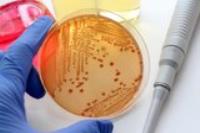 Add My Company
Add My Company
Sign In
Active v Passive Air Sampling
08-03-2022

In all cleanrooms, measurement of the bioburden (viable bacteria, spores, and moulds) is essential to ensure air quality. Some cleanroom monitoring is described as passive monitoring and some is described as active monitoring. So what is the difference?
Passive Monitoring In some locations, environmental monitoring consists of an agar plate which is left open on a surface in the laboratory or cleanroom to capture any falling microbes and give a sense of the quality of the air. This is passive monitoring, and in this case the plate is known as a settle plate.
Those bugs that stick to the agar on the plate during this process will form colonies, andprovide an indication of the air quality in the laboratory.
Active Monitoring.
Environmental monitoring which is carried out using an air sampling or air monitoring device is known as active monitoring. Air is drawn into the monitoring system and impacted onto the surface of an agar plate in a controlled way. The subsequent number of colony forming units (CFU) can be measured, and as the rate of air drawn into the system is also known, the number of CFUs per cubic metre can be established.
How do they compare?
Not well for fans of passive monitoring. Active monitoring appears to be anything from 20 to 40 times more efficient than passive monitoring.
Which to use?
Passive monitoring using settle plates is an option in very low grade environments where an indication of air quality is needed, but high accuracy or quantifiable measures are not needed. It is low cost and easier to do than active monitoring, but is a less accurate measure of air quality.
Active monitoring requires specialist equipment but provides a consistent quantifiable and more accurate measure of air quality. It is the preferred option for controlled environments and cleanrooms up to Grade A.
For more information on Active v Passive Air Sampling talk to PMT (GB) Limited
Enquire Now
More News
List your company on FindTheNeedle.

